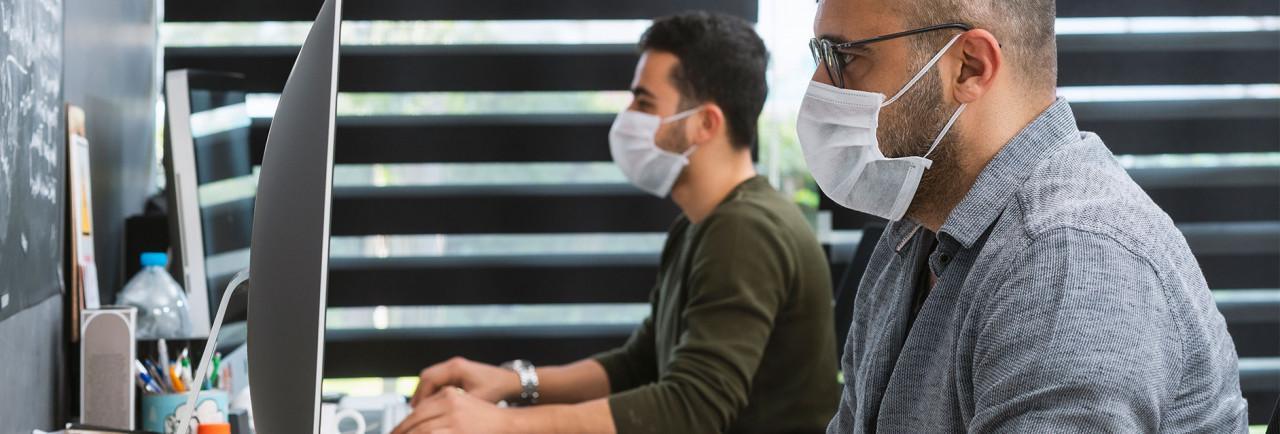The past few months have certainly been challenging for businesses all over the UK - from start-ups to established industry leaders. Organisations have found themselves adapting to the demands of a remote workforce virtually overnight, deploying communications solutions to enable their teams to engage with both each other and their customers. While it's true that this technology has been available for a while now, it has never been deployed at this scale before. This has presented a range of challenges when it comes to infrastructure, but these are only part of the picture.
"The world will never be the same after Coronavirus…"I kept hearing this phrase a few weeks ago and had no idea why people were saying it. Why would the world never be the same again? It didn't make any sense to me, surely once this is over it will all go back to the same way it was before, right? Wrong.
COVID-19 has forced organisations across the UK to re-evaluate virtually every aspect of how they operate, from policies regarding remote working, to the security of their data. There's no doubt that the IT landscape has been fundamentally transformed by these challenges, as new innovations have been unveiled and deployed at an unprecedented pace. None of this could have been achieved without businesses and IT providers working hand-in-hand to meet the challenges presented by the pandemic.
There's no doubt that Unified Communications have never been in such high demand as in recent months. The current global pandemic has meant the need for secure and reliable remote working tools has risen to an unprecedented level, with a wide range of solutions thrust into the limelight as a result. Platforms like Zoom and Microsoft Teams are now a...
Amidst all the stress of lockdown, it's been heartening to see some of the ways in which people have pulled together to support each other, and the work charities all over the UK have been doing to ensure the vulnerable are protected and the NHS receives the support it needs. However, as with many other sectors, COVID-19 has pushed many charities' IT infrastructures to their limit, as they are not only forced to adapt to the Government's remote working requirements, but also rethink their approach to fundraising.
The current global stay at home policy has fundamentally changed how we all work. Many around the world have become accustomed to the daily use of teleconferencing tools, instant messaging platforms and shared documents hosted in the Cloud.
Four months into 2020, and there's no doubt that home working is here to stay. Even before our current pandemic, we saw the number of people working from home more than double between 2008 and 2018[1]. Nonetheless, in the COVID-19 era, everyone has been thrust into what has often been called the "modern workplace". In spite of our early successes, this is still very much a work in progress, as both organisations and employees establish whole new approaches to the way we work, and new tools and processes arising in response to the challenges we face. But thinking exclusively in terms of the workplace is arguably ignoring the bigger picture. We're not just seeing a shift in how we work, but a large-scale transformation of how we connect and interact with each other.
A number of charities have their IT foundations built on historical infrastructure and systems which are hard to appropriately protect. Within the current climate, it is now vital that all solutions are accessible remotely, ensuring employees do not need to travel into offices. However, where does this leave cyber security? The Department for Digit...
It's impossible to overstate the impact COVID-19 has had on businesses throughout the UK, forcing organisations to rethink their approaches to work, and – in many cases – redesign their infrastructures to accommodate the Government's new requirements for remote working. The legal sector is no different, but has been hit especially hard, due to the preponderance of cumbersome legacy systems that need to be migrated and updated, and a generally slow rate of digital transformation across the entire industry.
Organisations around the world are moving closer and closer to establishing a new standard of best practice for remote working, with new tools and processes revealing themselves in response to the current pandemic. well for the future and our 'new normal', it's important that we treat our new home working environments with the same level of diligen...
In recent weeks, companies across the UK have found themselves transitioning to a remote workforce with little to no choice, despite the approach previously being treated as solely for limited or specific circumstances. There's no doubt that the rapid implementation of a whole new way of working presents considerable challenges, but as the Exponent...
Now more than ever, digital security is a team effort, with staff at all levels of an organisation having an active part to play in keeping critical business data safe. With the outbreak of COVID-19, and an unprecedented volume of staff working from home, robust security policies and systems are no longer enough - each and every member of staff mus...












